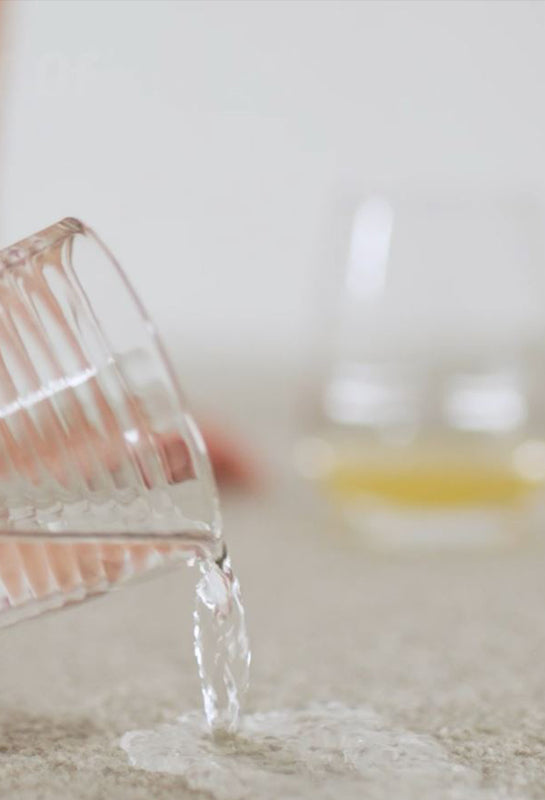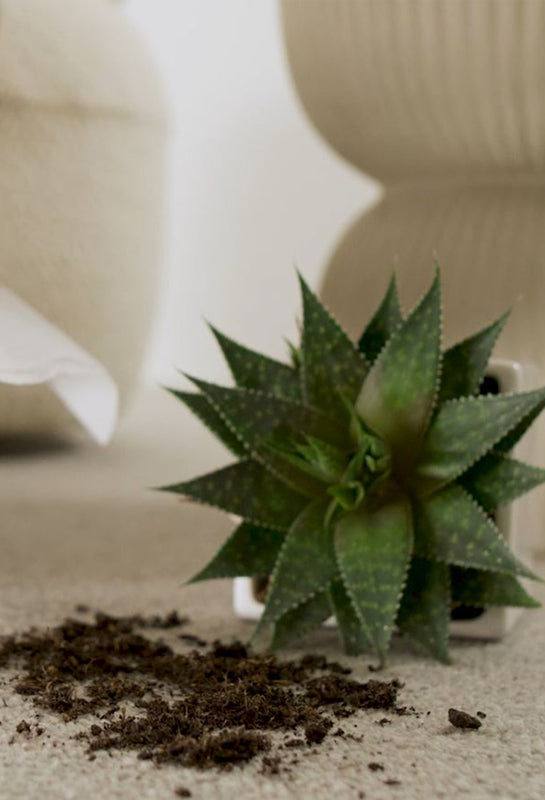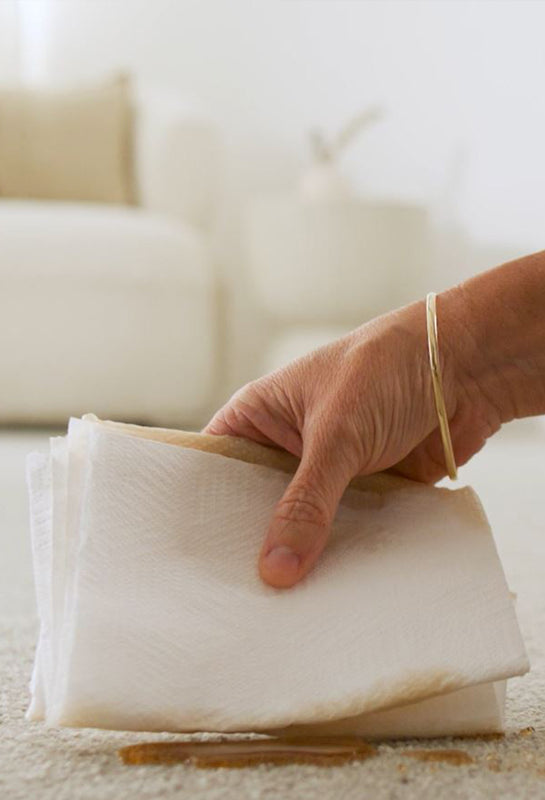Wool Carpet Care
Are you considering buying new wool carpet and want to ensure your new investment looks its best for as long as possible? We got you.
We source only the highest quality materials to ensure your carpet stands up to modern family life. As with all types of flooring, our carpets require regular care to stay looking their best, so please take time to read the recommended care and cleaning procedures below.
SOILING
More often than not, soiling occurs when people or pets walk bits of dirt in from outside. Prevention is always better than cure and we recommend keeping doormats in all your entranceways.
STAINING
Staining occurs from the chemical bonding of a pigment with the carpet fibre and once this bonding has taken place, separating the two is extremely difficult without causing damage to the carpet pile. That's why it's critical to sort out spills and stains as soon as they happen.
See our Stain Cleaning Guide with short video tutorials here
VACUUMING
How do I keep my carpet looking good?
We highly recommend that you dry vacuum at least once a week with a non-rotating suction head. Vacuum more frequently in areas with high usage. By doing this, soil or dirt won't become embedded in the pile or grind against the tufts' bases, wearing them out more quickly.
Caring for Different Types Of Wool Carpet
Here are the best vacuuming techniques for the different styles of wool carpet; Loop Piles and Cut Piles.
1. Loop Pile Carpets

The best way to regularly vacuum loop pile carpets is to use a straightforward vacuum head.
To keep your carpet looking good, it's best to avoid using turbo or spinning head attachments as these can cause frizzing, and like with all carpets, avoid excessive force.
2. Cut Pile Carpets
When vacuuming cut pile carpets we still recommend using a suction head on your vacuum. Be mindful of excessive force, or excessively using a rotating brush vacuum head can compromise the tailored appearance of your cut pile carpet.

We recommend using a simple suction head (avoid using excessive pressure, which could flatten the carpet) and occasionally grooming with your turbo or rotating brush head.
PROFESSIONAL STEAM CLEANING
Professionally clean your carpet at least every two years. This must be carried out when your carpet still looks dirty after vacuuming - or every two years at a minimum to keep your warranty valid. We recommend hot water extraction or steam cleaning only. The use of do-it yourself carpet shampoo machines will void your warranty.
Do not be concerned about the wet cleaning process removing natural oil from your wool carpet – most of this was removed during manufacture as an oily carpet attracts dirt far more quickly.
CARPET TRAITS
Every style of carpet comes with its own benefits and characteristics, so here's a quick look at a few common traits you can expect from the carpet you choose.
CRUSH MARKS
New carpet can exhibit noticeable light and dark areas, often in strips. This is more likely to occur with plusher pile carpets and is known as crush marks. It's caused by the weight of the carpet in a large roll pressing down on the layers underneath and bending the fibres. Over time, with regular vacuuming and general foot traffic, this effect will diminish, though it can take three to six months or so for the marks to disappear entirely.
DETERRING INSECTS FROM YOUR WOOL CARPET
Bremworth wool carpet is treated with an insect resist agent to deter an infestation of fibre eating insects such as carpet beetle and clothes moth. The insect resist agent works by consumption so minor fibre loss to your carpet may occur.
Preventative measures include regular and thorough vacuuming, especially in areas around and under furniture that is not moved frequently, and along skirting boards. All Bremworth wool carpet comes with a 15-year insect resistance limited warranty.
FADING
As with all natural textiles, wool carpet will fade or change colour over time in areas consistently exposed to sunlight. Light and pastel coloured carpets are the most vulnerable and no carpet is immune.
North or west-facing glass doors or floor-to-ceiling windows are most likely to lead to fading and we'd recommend the glass with effective UV protection. Curtains, blinds and louvres offer the best protection. Laying tiles around the border of the room and insetting the carpet can also provide protection from the strongest sunlight at the edge of a room.
FLUFFING ON NEW CARPET
When a carpet is new, balls of fluff may appear on the surface. These are loose bits of fibre left in the pile by the manufacturing process and are a tiny proportion of the fibre in the pile – so it's perfectly safe to vacuum up the fluff. On loop pile carpets, this fluff may appear as frizzing, which you can free up with a strong suction vacuum. Walking in socks or pantyhose on your new carpet can accentuate fluffing because the fibres in the socks or pantyhose can draw these loose fibres to the surface.
INDENTATIONS FROM HEAVY FURNITURE
A couple of great ways to minimise indentations is by placing cups under the legs of heavy furniture and regularly shifting furniture a few inches one way or another so the pile can bounce back. We recommend the use of protector mats where castor chairs are used.
To revive flattened piles, you can use a warm steam iron over a towel laid on top of the carpet. Hold the steam iron gently to the towel and use the steam button to inject steam but don't press the iron down on the towel as this can leave gloss marks.
SPROUTING
A single tuft rising up from the pile surface is called 'sprouting' and in cut pile carpets, it's safe to trim these sprouts with scissors. Avoid pulling the tuft, as this could leave a hole in the carpet. With loop pile carpets, we recommend professional repair, which can be arranged through your carpet dealer.
TRACKING VS PERMANENT SHADING
As the name suggests, 'tracking' is the imprint left by footprints on your carpet. This is more common on plush cut pile surfaces and disappears with vacuuming. Carpet is most prone to tracking in high-traffic areas like doorways and halls, so give them a bit of extra attention when you're vacuuming.
All cut pile carpets, particularly 'plush pile' carpets will develop lighter or darker patches over time. Known as 'shading' or 'watermarking' it's caused by the permanent bending of the carpet pile fibres, which then reflect the light differently.
Shading often becomes apparent six to eight weeks after the carpet is first installed. Shading does not affect the wear or durability of the carpet, it's not a manufacturing defect and brushing or shampooing does not reduce shading.








